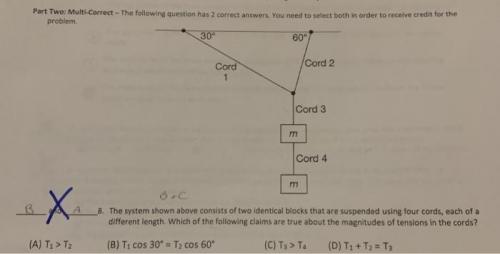Options:
a. a lower frequency and a shorter wavelength.
b. a higher frequency and a longer wavelength.
c. a lower frequency and a longer wavelength.
d. a higher frequency and a shorter wavelength
Answer:
d. a higher frequency and a shorter wavelength
Explanation:
The frequency of a wave is inversely proportional to its wavelength. That means that waves with a high frequency have a short wavelength, while waves with a low frequency have a longer wavelength. Light waves have very, very short wavelengths.
For example, Gamma rays have the highest energies, the shortest wavelengths, and the highest frequencies. Radio waves, on the other hand, have the lowest energies, longest wavelengths, and lowest frequencies of any type of EM radiation.



 1
1  1
1  1
1  1
1 
